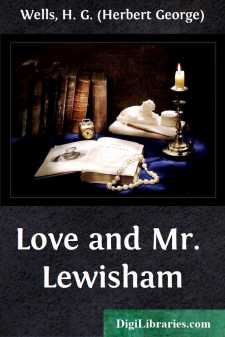Categories
- Antiques & Collectibles 13
- Architecture 36
- Art 48
- Bibles 22
- Biography & Autobiography 813
- Body, Mind & Spirit 142
- Business & Economics 28
- Children's Books 15
- Children's Fiction 12
- Computers 4
- Cooking 94
- Crafts & Hobbies 4
- Drama 346
- Education 46
- Family & Relationships 57
- Fiction 11828
- Games 19
- Gardening 17
- Health & Fitness 34
- History 1377
- House & Home 1
- Humor 147
- Juvenile Fiction 1873
- Juvenile Nonfiction 202
- Language Arts & Disciplines 88
- Law 16
- Literary Collections 686
- Literary Criticism 179
- Mathematics 13
- Medical 41
- Music 40
- Nature 179
- Non-Classifiable 1768
- Performing Arts 7
- Periodicals 1453
- Philosophy 64
- Photography 2
- Poetry 896
- Political Science 203
- Psychology 42
- Reference 154
- Religion 513
- Science 126
- Self-Help 84
- Social Science 81
- Sports & Recreation 34
- Study Aids 3
- Technology & Engineering 59
- Transportation 23
- Travel 463
- True Crime 29
Little Wars; a game for boys from twelve years of age to one hundred and fifty and for that more intelligent sort of girl who likes boys' games and books.
Categories:
Description:
Excerpt
OF THE LEGENDARY PAST
"LITTLE WARS" is the game of kings—for players in an inferior social position. It can be played by boys of every age from twelve to one hundred and fifty—and even later if the limbs remain sufficiently supple—by girls of the better sort, and by a few rare and gifted women. This is to be a full History of Little Wars from its recorded and authenticated beginning until the present time, an account of how to make little warfare, and hints of the most priceless sort for the recumbent strategist....
But first let it be noted in passing that there were prehistoric "Little Wars." This is no new thing, no crude novelty; but a thing tested by time, ancient and ripe in its essentials for all its perennial freshness—like spring. There was a Someone who fought Little Wars in the days of Queen Anne; a garden Napoleon. His game was inaccurately observed and insufficiently recorded by Laurence Sterne. It is clear that Uncle Toby and Corporal Trim were playing Little Wars on a scale and with an elaboration exceeding even the richness and beauty of the contemporary game. But the curtain is drawn back only to tantalise us. It is scarcely conceivable that anywhere now on earth the Shandean Rules remain on record. Perhaps they were never committed to paper....
And in all ages a certain barbaric warfare has been waged with soldiers of tin and lead and wood, with the weapons of the wild, with the catapult, the elastic circular garter, the peashooter, the rubber ball, and such-like appliances—a mere setting up and knocking down of men. Tin murder. The advance of civilisation has swept such rude contests altogether from the playroom. We know them no more....
THE BEGINNINGS OF MODERN LITTLE WARFARE
THE beginning of the game of Little War, as we know it, became possible with the invention of the spring breechloader gun. This priceless gift to boyhood appeared somewhen towards the end of the last century, a gun capable of hitting a toy soldier nine times out of ten at a distance of nine yards. It has completely superseded all the spiral-spring and other makes of gun hitherto used in playroom warfare. These spring breechloaders are made in various sizes and patterns, but the one used in our game is that known in England as the four-point-seven gun. It fires a wooden cylinder about an inch long, and has a screw adjustment for elevation and depression. It is an altogether elegant weapon.
It was with one of these guns that the beginning of our war game was made. It was at Sandgate—in England.
The present writer had been lunching with a friend—let me veil his identity under the initials J. K. J.—in a room littered with the irrepressible debris of a small boy's pleasures. On a table near our own stood four or five soldiers and one of these guns. Mr J. K. J., his more urgent needs satisfied and the coffee imminent, drew a chair to this little table, sat down, examined the gun discreetly, loaded it warily, aimed, and hit his man. Thereupon he boasted of the deed, and issued challenges that were accepted with avidity.......












